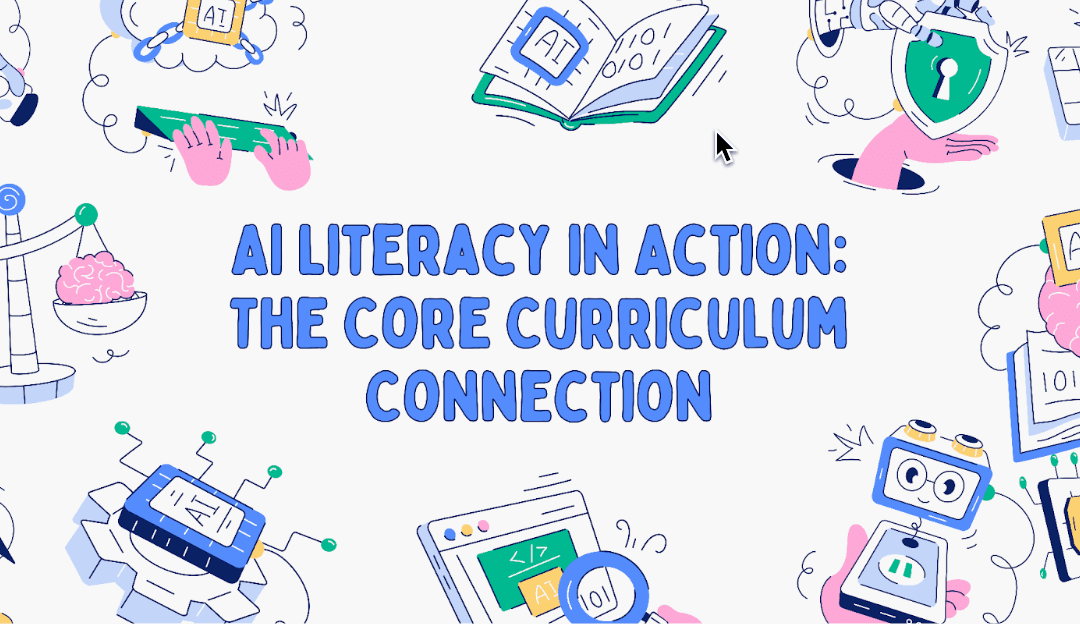Guest Blogger: Lindy Hockenbary
Lindy Hockenbary—aka “LindyHoc”—is the bridge between education and technology. With experience in instructional technology, professional development, and curriculum design, Lindy helps educators make sense of emerging technologies—especially artificial intelligence—and their real impact on teaching and learning.
Her journey began in a technology-equipped classroom, where she first blended instruction with innovation. Since then, she’s supported educators around the world, authored *A Teacher’s Guide to Online Learning*, and collaborated with EdTech companies to ensure their tools align with the needs of K–12 educators. In recognition of her leadership in this space, she was named a 2025 Women in AI honoree by ASU+GSV.
Lindy’s work is grounded in a passion for making technology literacy accessible and meaningful for every classroom. Her mission is to empower educators with the confidence and clarity to navigate the evolving intersection of technology and pedagogy.
What if I told you that teaching artificial intelligence (AI) literacy doesn’t have to be “one more thing” or take more of your planning time? That it can (and should) live inside the curriculum you’re already teaching? The truth is: AI is made by humans—and its inner workings are deeply tied to core subjects like math, science, ELA, and more.
Ready to get started? Keep reading to get three free, easy-to-use tools that illustrate AI fundamentals—and how you can use them to teach core content like math, science, ELA, and more.
Why AI Literacy Matters
aiEDU’s AI Readiness Framework defines AI literacy as “the collection of skills and knowledge that a person needs to confidently understand, ethically use, and critically evaluate artificial intelligence in a world where AI is ubiquitous.”
AI is transforming the world around us—how we work, communicate, and learn. Teaching AI literacy isn’t about giving students chatbots or AI agents. It’s about helping them understand how this technology works, how it impacts their world, and how to use it responsibly.
But here’s the great news: you can build AI literacy into the content you’re already teaching. The following are all free Google tools that require no account creation. However, before using those tools with your students, make sure the tool is in compliance with local, state, and federal policies and laws. And as always, never put personal, confidential, sensitive, or proprietary information into an AI model. My Navigating AI: Educator’s Rules of Thumb infographic can help, as well as my NCCE webinar Demystifying AI: Essentials for Educators.
Activity 1: Quick, Draw!
Quick, Draw! is a crowd-pleasing tool where users draw objects in 20 seconds while an AI tries to guess the image. Imagine playing Pictionary but with an AI rather than a human partner. It’s more than just a fun game—it’s a perfect demonstration of how AI is literally and figuratively a predicting machine. Once you complete the activity (which you must do as you don’t want to miss the fun), you can review Quick, Draw!’s training dataset. By examining the dataset you can surface many core understandings of how AI works:
- Math: AI looks for patterns in order to make its predictions. That’s literally math! Open one of the drawings from the dataset, such as the apple, and you will see that the majority of the drawings for the apple have similarities: a stem and the shape, to be exact. Whether you’re teaching kindergarteners about visual patterns or high schoolers about complex functions, pattern recognition is a math concept that connects seamlessly to the fundamentals of AI.
- Social studies and ELA: Dive into the concept of bias. For example, most drawings of “alarm clocks” are analog—a type many gen Z and Alpha students have never seen. Or the “bandage” includes mostly drawings of bandaids. These examples within something as simple as a doodle open a powerful discussion about whose experiences are represented in AI training data and why that matters.
Activity 2: Teachable Machine
What better way to learn about how AI works than to build your own AI model! Teachable Machine lets students easily build and train their own AI models with images, audio, or body poses—no high technical skills required. It’s as engaging as it is educational. Some core curriculum connections include:
- Science: Train a model to identify local plant species or types of rocks. Then analyze why the model struggles with items from different regions—introducing the idea of geographic bias.
- Math: Learners can graph how accurate their model is, track errors, and explore why certain predictions succeed or fail.
- Performing arts and health enhancement: Use the “pose” model to train AI to recognize dance poses or classify proper and improper exercise movements, weight lifting stances, or sports techniques.
Activity 3: Say What You See
Say What You See is a playful writing-meets-AI prompting experiment and a great way to “trick” your students into narrative writing! Students get an image that has been created via AI text to image generation. The goal is to write a concise prompt to recreate the image as closely as possible. The core curricular connections are endless:
- ELA: Prompting is writing! This activity supports narrative writing, summarization, and vocabulary precision.
- Digital citizenship: AI literacy is really another branch of the digital citizenship tree. Since AI can generate realistic visuals from text, this activity is a great springboard for discussing misinformation and disinformation in the media.
AI Literacy Belongs in Every Classroom
In an AI-infused world, AI literacy belongs in every classroom. Whether you’re teaching kindergarten patterns or AP Statistics, AI concepts can—and should—be embedded into your content. These tools are free, fun, and flexible. More importantly, they help prepare students for the world they’re growing up in.


